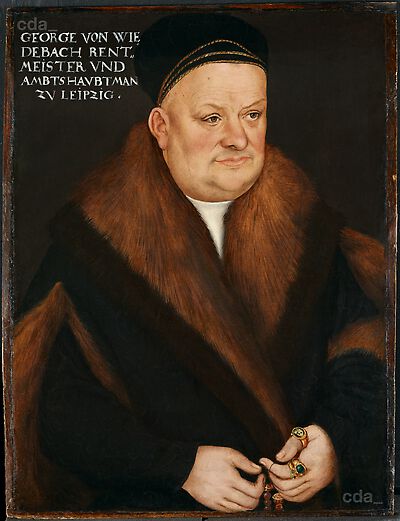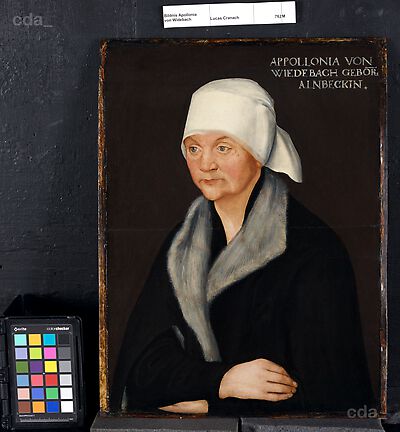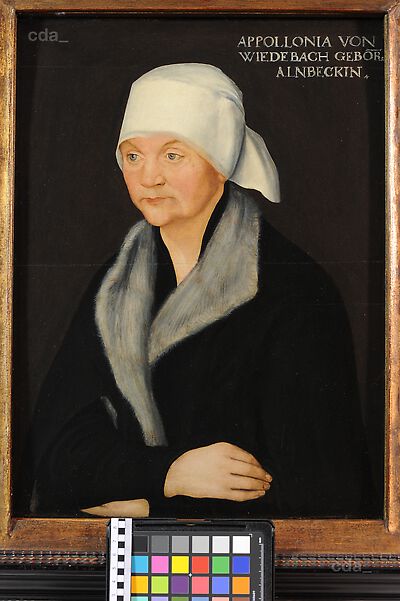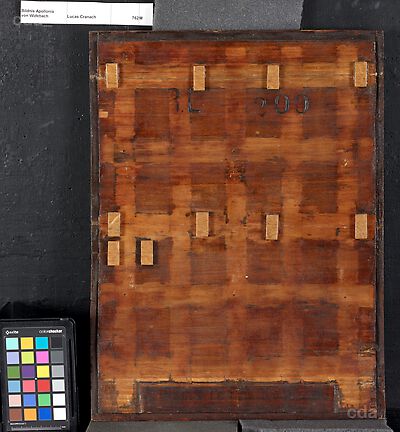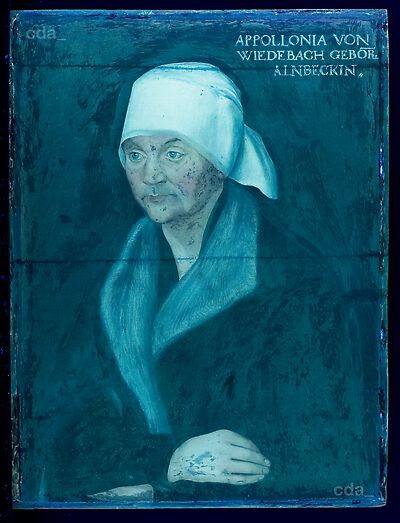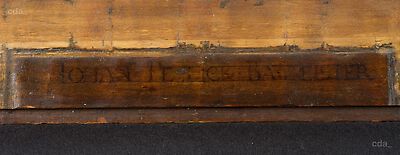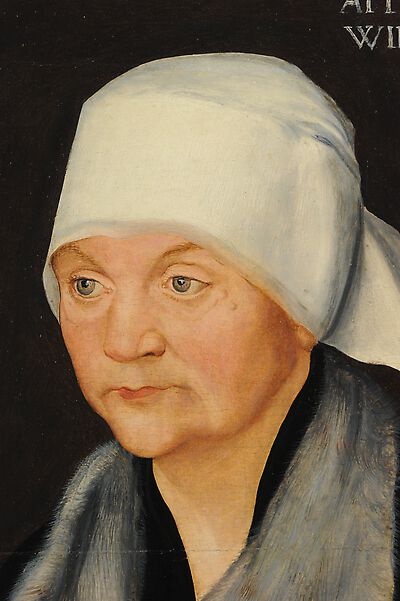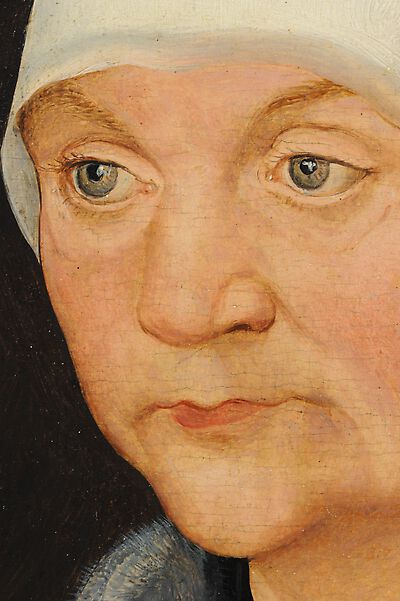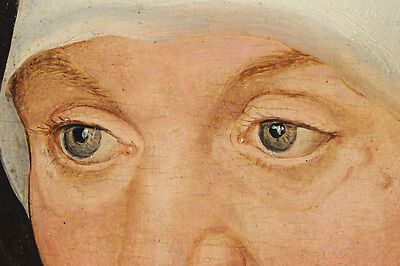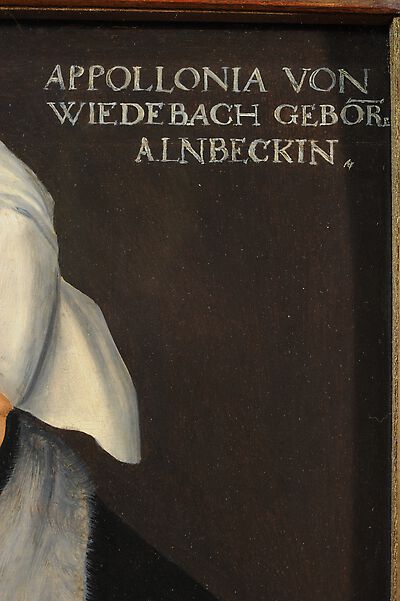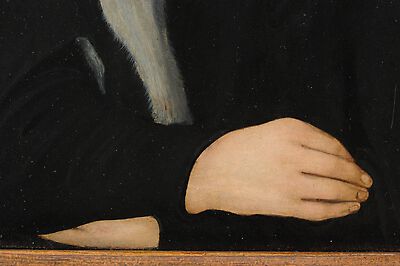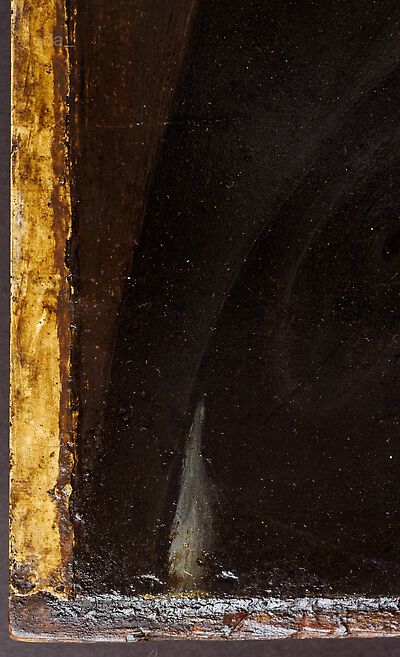Support
- limewood (Tilia sp.). Identification of wood species carried out by Dr. Peter Klein, 26.10.2013. Report from 26.10.13 in the conservation file
- probably cut out of a larger panel
- 4 boards, horizonally aligned
- butt joints with a rebate on all four sides, probably originally in an engaged frame
- board widths: I: 4.6cm left/4.5cm right, II: 15,.5cm right/14.8cm left, III: 15.8cm left/15.1cm right, IV: 4.4cm right/4.3cm left
- remains of the original surface with marks from a block plane
- a reinforcement on the joins is not visible
- rebate on all four sides; width 8-11mm
Ground and Imprimatura
- white ground, probably chalk/glue (not tested)
- thick ground, c. 0.5 mm
- on the left and right sides of the panel the ground extends to the edge (indication that the panel may have been cut out of a larger panel with a ground appplication), at the bottom edge an indentation is visible in the ground (no barb, it may have been sanded down when the panel was fitted in a frame), at the top the edge of the ground is visible (no barb), small ridges may result from the ground of the original frame or from the paint application
- an incised line runs almost continuously around the edge, further incised lines: from the corners at a c. 45° into the image, c. 5-6cm
Underdrawing
- delicate, economic line drawing (faintly visible in IR). The facial features were probably traced with a stylus
- not visible to the naked eye
- no alterations visible
Paint Layers and Gilding
Flesh paint:
Shadows and half-shadows applied over the white ground with an initial cool greyish-brown wash and blended. For the highlights the ground remained exposed. After drying a vermilion/ochre/white admixture was delicately applied, wet-in-wet and in part scumbled over the greyish-brown layer to create a mother-of-pearl-like flesh tone. This tone created the half-shadows. The shadows were defined by the greyish-brown underpaint. Highlights employing a vermilion/white admixture were added to the wet flesh tone and in part blended. Finally fine contours were applied in a brown tone. The hair was initially painted with an unmodulated layer of ochre. After drying linear highlights and contours were added.
Headscarf:
opaque with lead white, grey shadows were blended wet-in-wet
Garments:
initial opaque black layer, modulated with a blended grey application, the collar was executed with a initial light grey semi-opaque layer, which was then given texture in grey nuances employing brown and black paint
Background:
initial brown layer with a subsequent semi-opaque blackish-brown layer
Text:
off-white, applied with a fine-tipped brush (no ruled lines)
- glazed to opaque, impasto highlights
- flat and pointed brushes of different widths, thin paint consistency, economic use of impasto
- the painted surface extends only minimally beyond the incised lines
Framing
- not original, 19th century
- dimensions: 61.5 x 51.5 x 5.0 cm
- coniferous wood
- mitred; consists of two profile frames fitted together; imitation ebony with a ripple moulding with gold accents, gilded inner profile
[Museum der bildenden Künste, 11.06.2014]

